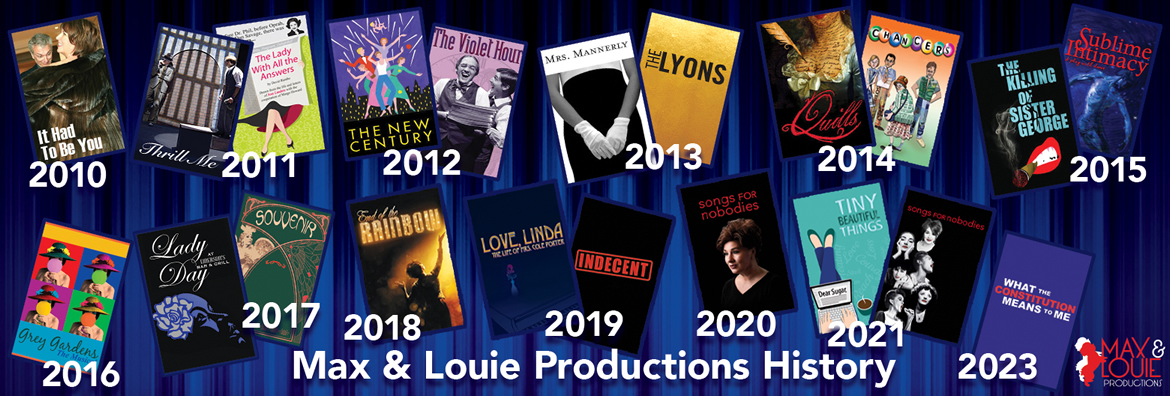The Killing of Sister George
Website Review
Judith Newmark – St. Louis Post Dispatch, July 12, 2015
When “The Killing of Sister George” debuted, Frank Marcus’ dark comedy about a lesbian actress was considered scandalous. But 50 years on, its new Max & Louie production under the direction of Brooke Edwards isn’t at all a play about sex. It’s a play about economics.
From the moment she storms into the fussy London apartment she shares with a young woman, Alice “Childie” McNaught (Shannon Nara), June Buckridge (Lavonne Byers) is in a foul and noisy mood. She suspects that the character she has long played on a radio soap opera, the beloved small-town nurse Sister George, is about to be killed off.
As her life unravels over the next couple of weeks, June drinks hard, puffs endless cigars and abuses Childie with humiliating threats and commands. (They are presumably lovers, though these games are about as close as the play comes to revealing the terms of their relationship.) But we know why she’s at the end of her rope.
June has made a good living as Sister George, winning fans and a kind of stardom in a role she loves. Childie even calls her George. Now that’s all about to disappear — and what are the prospects of another good job for an actress with a reputation for bad behavior, an actress who’s no longer young?
June is in the same position as countless factory workers, office workers, skilled craftsmen and others who have had to watch, powerless, as their companies downsized, their jobs were outsourced, or their careers simply vanished into history. Writing about that 50 years ago, playwright Marcus sounds like a prophet.
And Byers is terrific. She builds on a host of little moments — narrowing her eyes to focus on Childie’s latest infraction, throwing herself into the role of Oliver Hardy opposite Childie’s meek Stan Laurel as they rehearse a party skit, sprawling on the sofa with her legs spread like a man’s though she’s wearing a tweed skirt — to create a woman at ease in her own thick skin.
Her troubles aren’t sexual or even internal. They come from an industry that’s thrown her away like an orange peel. June’s nearest theatrical counterpart isn’t some social outlier; it’s Willy Loman in “Death of a Salesman.” Even the plays’ titles echo.
As Childie, Nara could take things down a notch or two, but she does convey the character’s flirtatious cunning. Cooper Shaw adds humor as the fortune-teller who lives downstairs, and Erin Kelley, gives a poised performance as a network executive. She shines in her “aria,” a solo rendition of a soap-opera episode, and makes the most of costume designer Cyndi Lohrmann’s comedy with hats.
Lohrmann gives them all apt costumes, from the gypsy’s swirling skirts to Childie’s mod minidress. Dunsi Dai designed the beautiful, expansive set, a comfy home tricked out with June’s many awards and Childie’s Victorian dolls.
But we have to bear in mind that, despite his then-shocking subject matter, Marcus was a man of his era — still the era of three-act plays. Somebody — Edwards? — has decided that today’s audience won’t sit still for that.
Instead, the first two acts are jammed together, creating a first act that goes on for fully 90 minutes (the entire length of many contemporary plays) before intermission. It’s like those old-fashioned cartoons about the shoe customer who insists that she wears a size 5. Even if she manages to squeeze into that, she won’t be comfortable.
You know June was never that kind of shopper. She demands all the room she needs. Her own play ought to provide it.
